Features of the use of eggshells for the garden

In the diet of almost every family there are eggs in one volume or another. Breaking them, do not rush to get rid of the shell and throw it in the trash. Do not forget that this component contains a high calcium content. Thanks to this peculiarity of the composition, the eggshell can become an excellent "helper" in the garden. In today's article we will look at features of the use of eggshells for the garden.
Composition and structure
Before proceeding with a detailed analysis of all the features of the use of eggshells in the garden conditions, it is worth learning more about its immediate composition and structure. In general, calcium is a metal.
In nature, the most common calcium compounds are bicarbonate and salts that are formed from it. These salts are a constituent component of limestone, chalk, as well as the shells of almost all possible eggs.
On calcium carbonate accounts for up to 95% of the composition of hard egg casings.
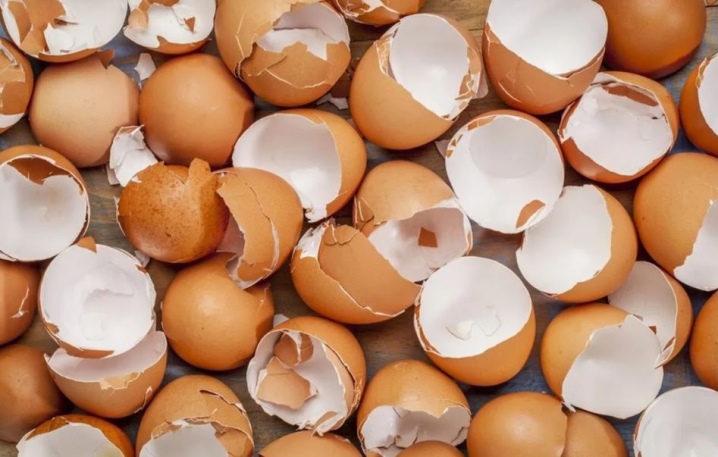
Do not think that the composition of the eggshell is limited only by the above component. In fact, there is still 27 different chemical elements present in the periodic table... These include: magnesium carbonate, phosphorus, magnesium phosphate, sulfur, aluminum, potassium and iron.
If we consider the entire content as a percentage, then we can come to the conclusion that all the listed components account for a very small part, but this will be quite enough if we resort to constant fertilizers.
Structure calcium bicarbonate, which is observed in the shell in large quantities, has a lot of differences from the structure of chalk, which was obtained by chemical means.
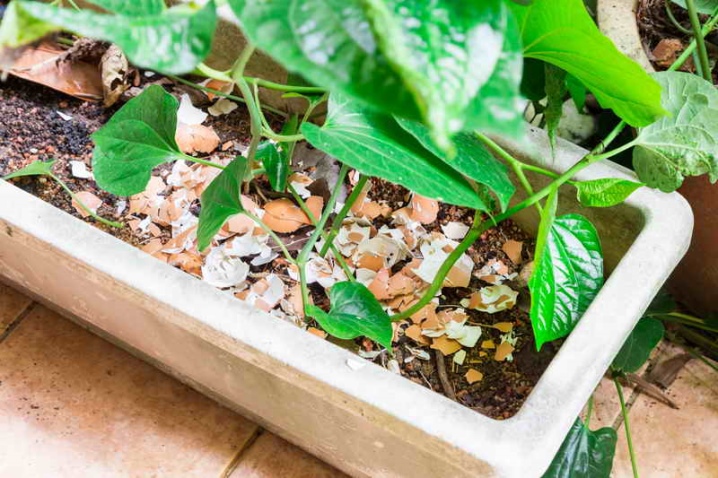
Appointment
Many gardeners actively use properly prepared eggshells, practicing in the garden or at their summer cottage.
When ground, this product can be incredibly useful for the garden.
The positive effect is noticeably increased when it comes to heavy, clayey or acidic soil. Due to its beneficial properties, crushed eggshells can be used for various purposes.
- To deoxidize the soil. All over the world, the most fertile soils are considered to be the pH level of which is in the range from 5.5 to 7. Only under the condition of these indicators, the proper dissolution of nutrients that are surrounded by plant rhizomes can be carried out. And also the right parameters will facilitate the absorption of all the necessary components for growth and photosynthesis. If the value of the level is 5, then this means that the soil is too acidic, which is toxic for many types of plantings. In this case, it is required to reduce the degree of acidity by 100 times.

- Eggshells can also be used if the soil needs to be enriched with minerals. These components are very important for both flowers and most other possible landings. Often, mineral components can be seen in fertilizers sold in garden stores.

- Using eggshells, it will be possible to increase the degree of looseness of the soil in the garden. Areas that are set aside for planting certain crops are often clayey, characterized by a rather heavy structure. Due to this feature, air may not flow to the root systems of plants.As a result, this fact leads to stagnation of water in the ground, and with a change in weather conditions - to the appearance of cracks and breaking off the roots. The addition of egg shells markedly improves the aeration characteristics of the soil.
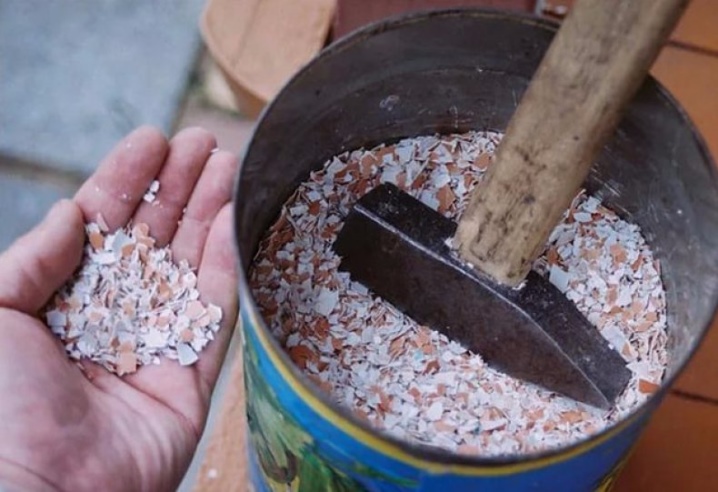
- With the help of a properly prepared eggshell, you can successfully scare off various dangerous pests that can cause serious damage to plants. Such pests include slugs, moles, and a bear. If egg powder takes effect in the fight against slugs or snails, then for shrews, bears and moles, it makes sense to use large fragments of the shell. It is allowed to break them, but very little. The pointed edges of hard shells will definitely prevent the spread of dangerous pests.


- Using eggshells, you can protect plants and flowers from a number of dangerous diseases. These include ailments such as black leg or apical rot.
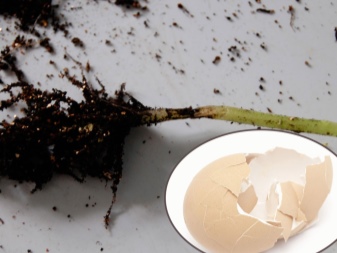
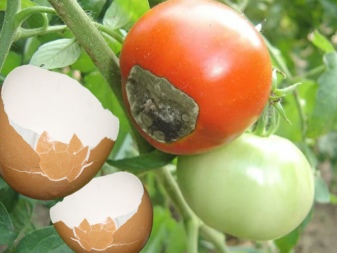
- Many gardeners and gardeners use eggshells as an environmentally friendly and efficient fertilizer, bringing exceptional benefits to plants.
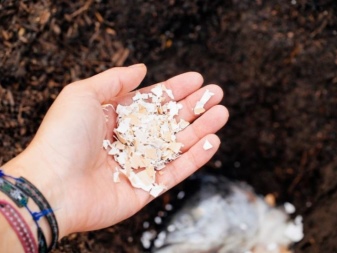
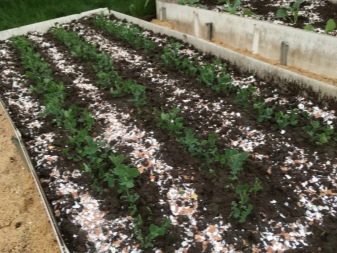
Application methods
Eggshell - a real storehouse of useful ingredients for a wide variety of cultures.
People who care for a garden and a vegetable garden often turn to this product and prepare useful compounds from it that have a beneficial effect on plant growth and soil condition.
Each of the possible applications has its own characteristics and nuances, which are important to consider. Let us consider in detail how you can use the egg shells when caring for the garden.
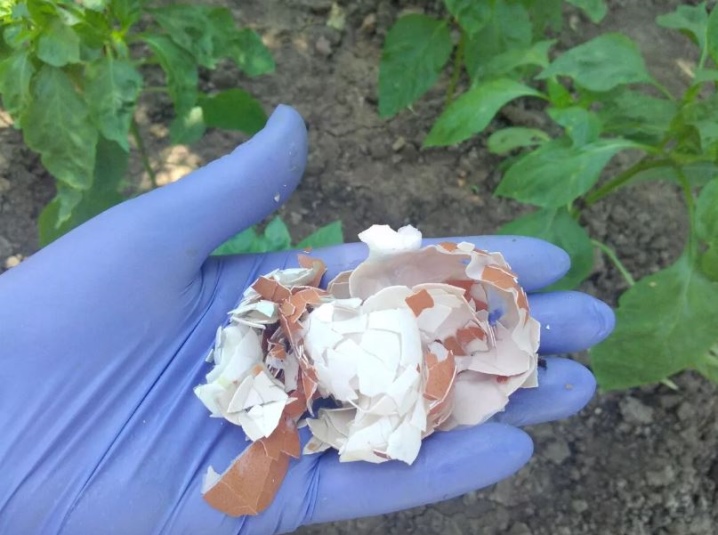
Decoction
Eggshells can be used to make an excellent and highly effective liquid type fertilizer. It is not difficult to make a good and effective feeding correctly. Consider a detailed recipe for preparing this useful remedy for care procedures in the garden, namely:
- you need to prepare the shell, in this case you will need material from 5-6 eggs;
- the shell will need to be thoroughly crushed;
- crushed eggshells must be poured with boiling water in a liter container;
- the resulting broth must be infused well; usually no more than 5 days are enough for this, from time to time the composition will need to be gently stirred;
- when the above period is over, a properly made broth should acquire a slightly unclear shade.
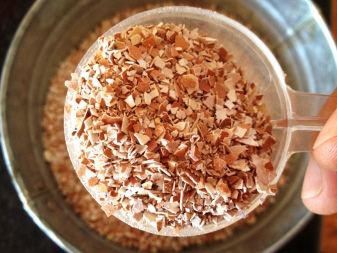
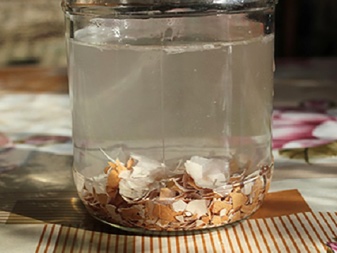
After all the above stages of preparation, the eggshell broth can be considered ready for use. It will be possible to water the plant several times with the composition., which feels more uncomfortable in acidic soil conditions.
As a result of such a simple procedure and the introduction of liquid fertilizing, you will ensure an excellent harvest.
Infusion
Probably everyone noticed a thin film on the eggshell. It can also be used for the benefit of planting in the garden. To do this, you need to properly prepare the tincture from the shell. Consider how you can independently make a useful tincture for fertilizing garden plantings.
- The unprocessed shell, together with the film on it, will need to be added to the water. The beneficial component should remain in the liquid for about 1-2 weeks. After this time, the water will certainly begin to become more turbid and even begin to exude a specific aroma of hydrogen sulfide.
- As soon as the water in which the unpeeled shells are located begins to smell accordingly, this will indicate that a useful and effective tincture has been prepared and can be safely watered on the plants in the beds.
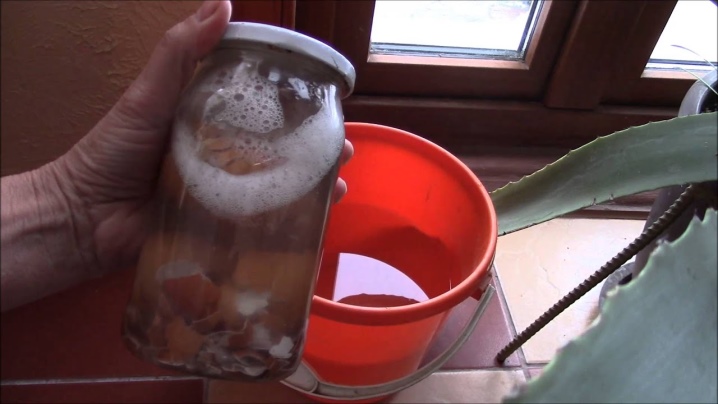
Before rushing to insist the eggshells in water, it is necessary to take into account the optimal proportions of all required components... So, for 1 liter of water, you will need to take at least 5 and no more than 10 shells.
The ready-made and infused solution is allowed to be additionally diluted with water under irrigation conditions up to 10 times.
Powder
Many gardening users resort to applying egg powder for additional fertilization of the planted crops. It is necessary to take into account the fact that to prepare an effective powder mixture, the shell must not be negatively affected by low temperature values before.
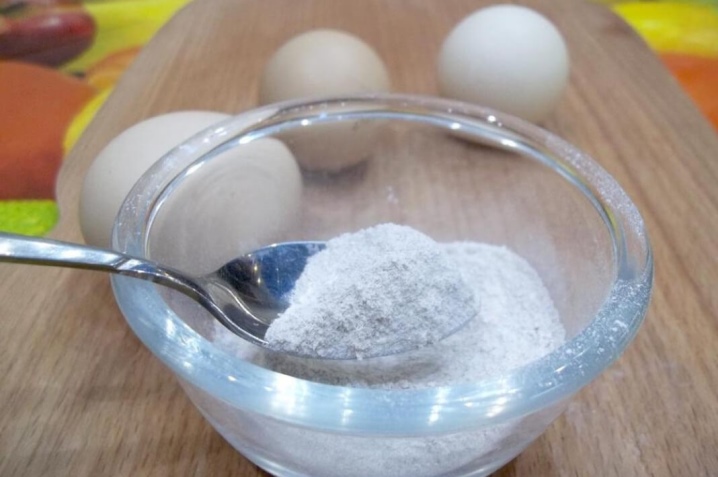
It is allowed to make powder from the shell of boiled eggs, but they will contain much less useful substances, especially in comparison with raw material that has not been previously treated with boiling water. Egg powder in most situations is used in the garden in order to reduce the acidity of the soil. For a more economical consumption of the prepared dry and crushed composition it is poured into the landing hole. So, the introduction in this way significantly reduces the risk of cabbage disease with a dangerous keel.
Using cooked egg powder, you can easily and effectively compensate for the lack of calcium in the case of various crops. For example, this product is ideal for caring for tomatoes growing in the garden.
When they suffer from a lack of calcium, they develop apical rot. A similar problem often occurs with peppers. To "save" the affected plantings and replenish the missing trace elements, egg powder will need to be sprinkled on the soil surrounding the plants.
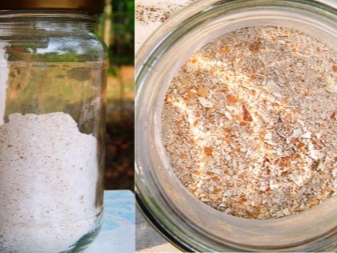
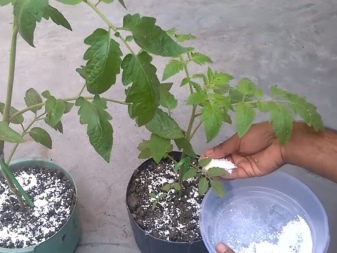
You can prepare powder from the shell in different ways. This is often done using a regular kitchen blender, coffee grinder, or mortar. When the shells are thoroughly crushed, the powder will need to be manually added to the desired area. Judging by the experience of using this useful and natural remedy, for 1 sq. m requires no less than 90 and no more than 110 pieces.
Fertilizer in a similar volume also makes sense to apply in the case when there is a soil of high acidity on the site. Then liming of the earth will hardly be avoided, but its fertility will certainly increase.
Important! If you do not have the required amount of eggshell, then you can turn to the preparation of a tincture or an effective decoction. They will prove to be no less useful and effective.
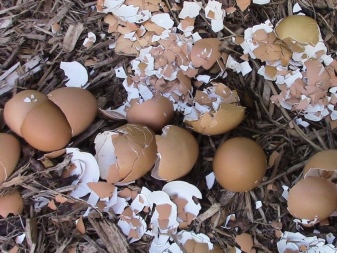
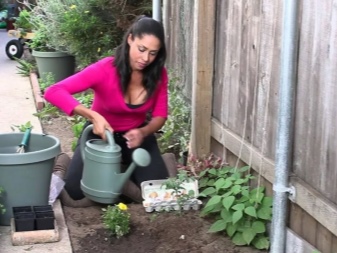
Collection and storage features
Before you start preparing useful decoctions and tinctures, you need to figure out how to properly collect the necessary material.
The only ingredient you need to create effective feeding is an eggshell. Almost any type of product is allowed to be collected.
It can be not only village, but also testicles sold in stores.... As mentioned above, products can be boiled or raw... As a basis it is allowed to use both chicken and goose shells.
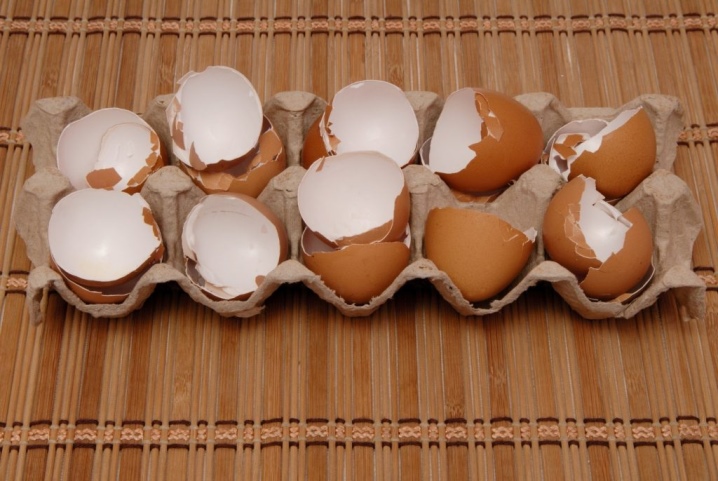
To prevent the main component from wasting its useful qualities, the following important rules should be adhered to:
- shells can be placed in a separate box only after preliminary rinsing; for this you should use cold water;
- the main component is placed in the tank only after it is thoroughly dried; you can leave the material to dry naturally, but many summer residents speed up this process by turning to the oven;
- containers with the necessary components should be stored in a warm and dry place; only in the specified environment, the useful egg film will not dry out or deteriorate;
- after 5 days, the shell will be completely ready for further use; experienced users advise to chop it thoroughly, and then gently arrange it into bags made of paper.
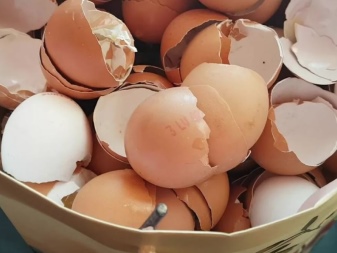

Ready dry shell flour you need store exclusively in a dry place - this requirement cannot be neglected. The storage area must be well protected from direct sunlight. We must not forget that for storing the received material in no case you cannot use simple plastic bags.
If you neglect this rule, then in the end you can face the fact that the prepared fertilizer product will absorb moisture and will simply be spoiled.

Gardeners' recommendations
If you have your own vegetable garden, and you decide to look after it using eggshells, you it is worth taking on board a few useful tips and advice from experienced gardeners.
- If you want to use the eggshells to make good drainage, then there is no need to grind them. Quite just knead the material in your hands.
- Eggshell dressings, can be deposited in different periods of time... There is no clear scheme in this matter, but many gardeners adhere to such a schedule as: they resort to adding additional fertilizing at the time of planting the crop, in the fall, in the spring, when it is time to dig the earth, as well as for periodic fertilization.
- Eggshell can be used by caring not only for garden plants, but also for indoor plants... As practice shows, for the last green pets, a properly prepared tincture from a natural main component is most suitable. It will need to be added no more often than after 1 or 2 weeks.
- To grind the shells, you can use not only a blender or mortar, but also a meat grinder. If there is no such technique at home or you do not want to use it, you can do it easier: put the shells in dense canvas bags, and then knock on them with a hammer.
- There are times when eggshells alone are not enough for plant care. This component allowed to combine with purchased dressings or with other natural fertilizers... The latter include ash, ash, banana skins, onion husks, orange peel, nettles, or peelings left over from potatoes.
- Every gardener should know that the level of soil acidity on the site needs to be reduced gradually. For example, in the first season, no more than 50 crushed eggshells should be introduced per 1 square meter of the garden.
- Poultry farmers note that brown eggshells are richer in calcium. By nature, it usually turns out to be quite dense, having a large mass when compared to white. Due to this, such a material is able to accumulate more useful minerals in itself.
- Eggshells also may be added in chunks, crushed to medium size... You can add such a useful component directly to compost or to organic matter. It is advisable to carry out the described procedure in the autumn season.
- If you are in doubt about whether it is possible to apply shell fertilizer for a particular plant in the garden, you should know that such a tool is safe for all types of landings.
- In "egg" cups, you can safely grow prepared seedlings... You just need to lightly crush the shell by hand. Due to such actions, the root planting system will be much easier and easier to punch them.
- If you have never used eggshells in your garden, you need to know that they decompose in the soil for an incredibly long time and slowly. For this reason there is no point in applying it for fertilization in a whole state - you just translate the material.
- Egg fertilization is required with care if hard water is used to water the plants. It is possible that the pH reaction is already neutral or alkaline. The shell runs the risk of making the situation worse.
- It is important to remember that an excess of calcium in the soil can cause a lot of trouble. For example, chlorosis can be "activated", appearing in the form of pale white spots on the leaf plates of plants.
- When preparing eggshells for storage, very it is important to thoroughly clean the inner surface of protein residues (both raw and boiled). If these actions are neglected, the remaining inclusions will certainly decompose, emitting an unpleasant specific odor.
- If you are preparing a powder or liquid formulation from the shell of brown eggs, you will need a little less of them. This is due to the fact that such a natural material is denser.
- If the shell is planned to be used to prepare drainage, then it makes sense additionally combine with sand and pebbles... As a result, a combination of materials will be obtained that remarkably allow water to pass through and gradually release useful substances, which serve as plant nutrition.
- To find out about the acidity level of the soil in a vegetable garden, you can just look at the weed grass that grows in it. Chamomile, coltsfoot, and clover grow on a neutral basis. The presence of mint, plantain or horsetail will indicate acidic ground.
- By sending the crushed and prepared eggshells for storage, it is important not to forget that it will retain its positive properties for one year.
- Most often gardeners use quail or chicken eggs for the preparation of dressings. Of course, it is not forbidden to use goose or turkey eggs. However, cooking them is a little more difficult - due to the impressive thickness, such shells can be difficult to process into flour.
- Very carefully you need to make eggshells when it comes to ornamental indoor plants... Such crops are especially susceptible to any fertilizer. The high concentration of nutrients that are present in the shell can even lead to their death, so it is important to be very careful.
- Not allowed add the eggshell grind to the cabbage, cucumber, spinach, strawberries, beetroot and beans wells.
- If necessary eggshells can be used for high-quality loosening of the soil in the garden.
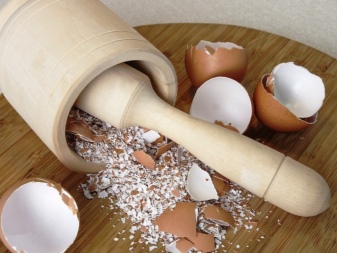
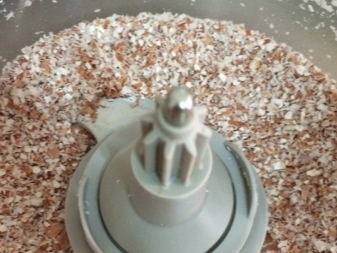
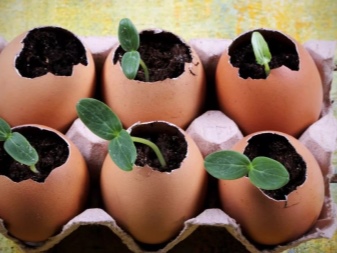
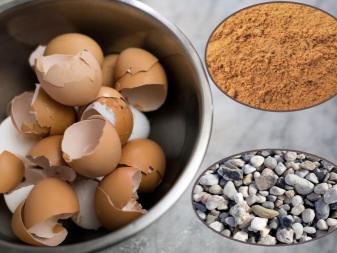
How to use eggshells as a pep, see the video.













The comment was sent successfully.